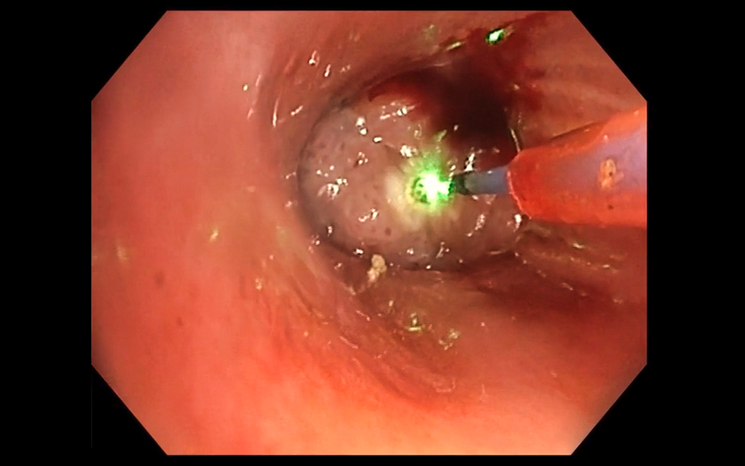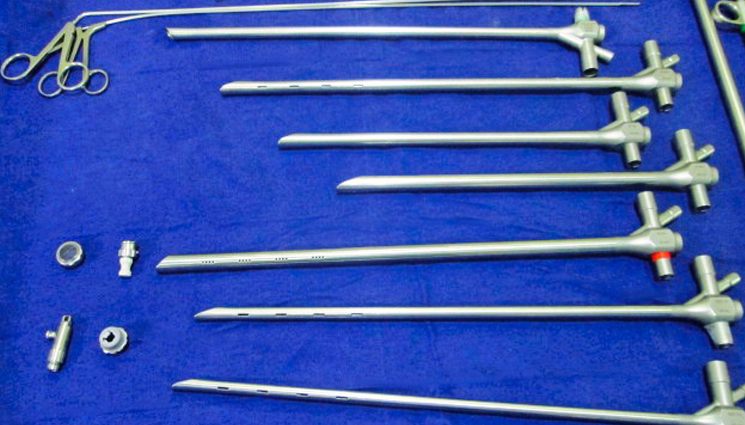
Latest diagnostic & therapeutic bronchoscopes (ranging from pediatric to therapeutic)
Flexible scopes bronchoscopes varying from the flexible ultra-thin scopes to the larger therapeutic ones are present. Various accessories such as endobronchial balloons, forceps, cautery, etc are available for various purposes such as obtaining samples from within the lungs as well as for various treatment purposes, e.g. stop bleeding.
Newest entrant in our armor – the single use flexible bronchoscopes → taking bronchoscopy out of the OT and onto the bedside. Various sized scopes have been added to perform bed
Endobronchial Ultrasound
A minimally invasive procedure that combines a bronchoscope with an ultrasound & a needle to remove tissue or fluid samples from lymph nodes. The advantages of EBUS are that it is very reliable, not painful, and results in a quick recovery. EBUS is most effective at collecting samples from hard-to-reach places in the lungs as well as from lymph nodes and other small areas for tissue samples.
We are fully equipped with radial probes to reach the smaller, peripheral lung lesions as well as the convex probes to sample the mediastinal and the hilar nodes.
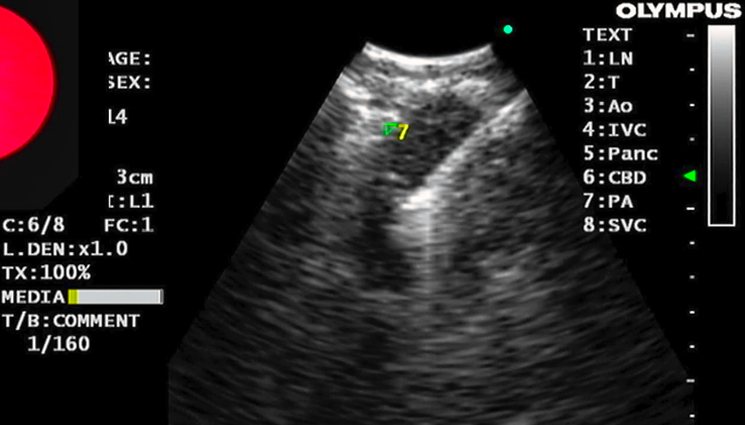
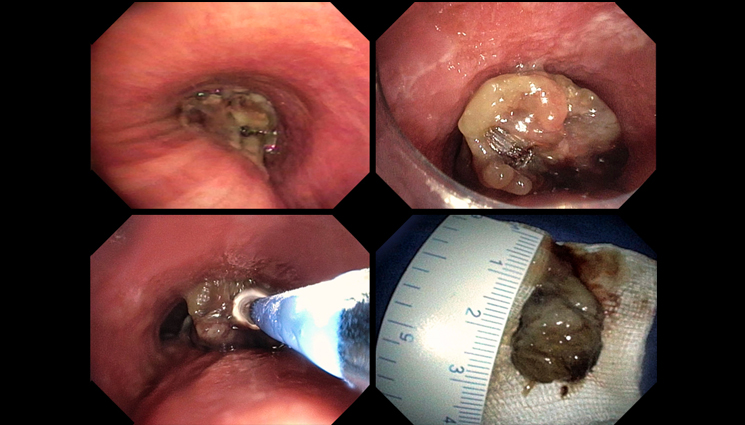
Cryoprobes
These are certain instruments that employ extremely low temperatures for the following purposes:
To freeze tissue for destruction (cryoablation) – This is useful mainly for pulmonary tumors to cause tumor cell death with subsequent removal of the tissue
For tissue adhesion (cryoadhesion) – This application has been particularly useful for removing various foreign bodies lodged inside the lungs.
For lung biopsy (cryobiopsy) – lung cryobiopsy has virtually replaced the more complex surgical lung biopsy, by giving an accurate diagnosis, meanwhile reducing the hospital stay and expense.
Rigid and semi rigid thoracoscopy
This is essentially entering into the pleural cavity for both diagnostic purposes such as pleural biopsies, as well as therapeutic purposes i.e. to drain the fluid, break the fluid pockets, remove clots, etc. In certain cases, it has helped avoid complex surgical procedures, which were a norm.
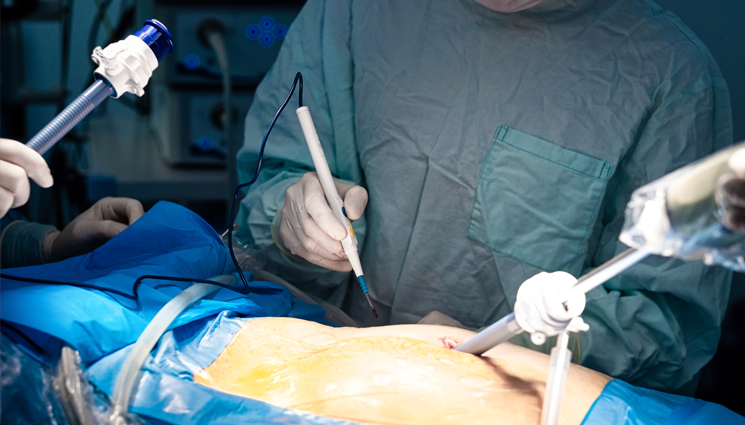
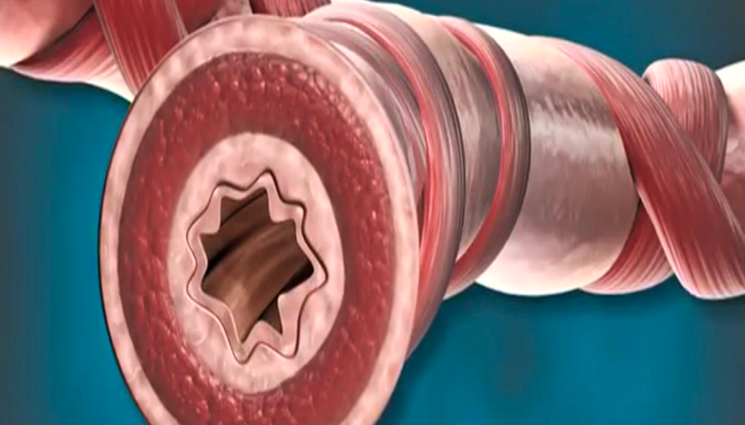
Bronchial Thermoplasty
A novel procedure for People with severe asthma. During an asthma attack, the smooth muscle that lines the lungs swells even more. The swelling makes breathing difficult. Bronchial thermoplasty is an asthma treatment that targets the smooth muscle in the lungs. The treatment uses heat to shrink the smooth muscle so it can’t tighten and cause asthma symptoms. The treatment involves three sessions, with three weeks between each session.
Studies have shown upto 84% reduction in hospital visits post treatment, better quality of life. These effects seem to persist long term according to the latest data.
Bronchoscopic Lung volume reduction- vapor ablation
InterVapor System for delivery of BTVA is a non-surgical and non-implantable therapy developed for lung disease including severe COPD and lung cancer. Vapor ablation is simply the application of heated pure water (steam) to tissue. BTVA is a simple, quick, and non-invasive procedure that typically takes less than 15 minutes. The procedure can be performed under light sedation. A thin tube (bronchoscope) is navigated down the airway to the diseased areas of the lung. Vapor is then delivered through the tube to these diseased regions. The vapor ablates the diseased tissue and the body removes the ablated tissue through the natural healing process. In patients with severe emphysema, vapor ablation of the most diseased areas of the lung may result in clinically meaningful improvement in breathing by increasing pulmonary function. Improved breathing can result in a better quality of life for patients suffering from severe emphysema.
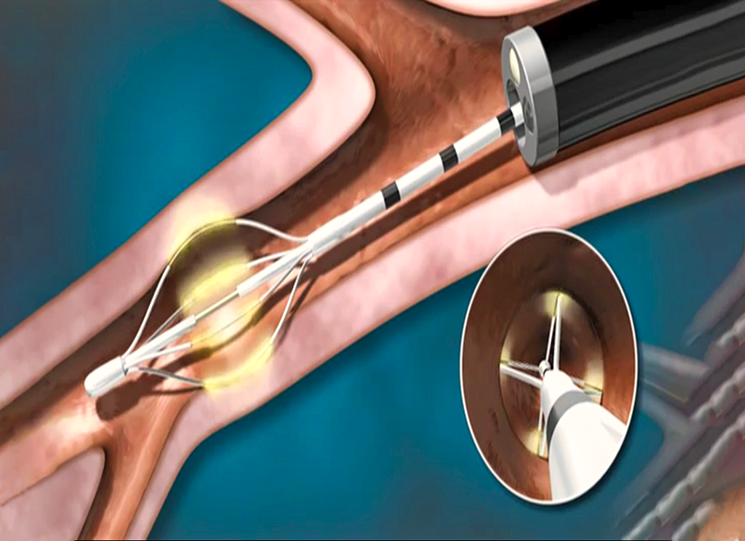
Stents (silicone & metal)
Endobronchial stents follow the same principle as stents in other places, e.g. the cardiac stents. Certain medical conditions like cancer, etc can cause narrowing of the wind pipes, which make breathing difficult for these patients. Stents are devices used which are placed in these narrowed wind pipes to keep them patent. These can be metallic as well as silicone depending upon the patient’s need. Various customized stents are also available.
Thulium Laser
Latest entry to our armamentarium is the laser. Bronchoscopic laser therapy is a time proven evidence-based modality for management of airway obstruction secondary to certain tumors (malignant or benign).
While the older lasers have limitations, the new Thulium fiber laser offers effective, accurate and safe therapy for patients. It offers precise controlled ablation, lesser bleeding due to better coagulative property and can be used near a stent without causing major risk of airway fires.
LASER just went from being Light Amplified by Stimulated Emission of Radiation to Lightning-fast, Accurate, Safe, Effective, Removal tool for lung tumors.
